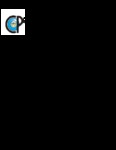| dc.description.abstract | El moho verde de los cítricos causado por Penicillium digitatum es la más importante enfermedad postcosecha en el mundo. Este estudio evaluó el efecto de nueve concentraciones de esporas en la germinación y crecimiento postcosecha de P. digitatum en naranjas. Todos los frutos fueron infectados cuando se inocularon con una solución de esporas a una concentración de 6x105 e/ml. El 50% de los frutos fueron infectados cuando se inocularon con 3x105 e/ml, solo algunos frutos mostraron síntomas. Los síntomas no aparecieron en frutos inoculados con 3x104 e/ml o menos. Las más altas concentraciones de esporas desarrollaron más rápido los síntomas, demeritando la calidad postcosecha del fruto y acortando su vida de anaquel. Los frutos infectados de todos los tratamientos se colapsaron para el día ocho después de la inoculación. Fueron evaluados tres tratamientos: piquete con tres niveles de presión (0.2, 0.4 y 0.6 Kg/cm2), cortada en tres longitudes (1, 3 y 6 cm) y golpe o deformación en tres niveles de presión (3, 4 y 5 Kg/cm2). La infección no ocurrió cuando las heridas fueron superficiales y no penetraron hasta el albedo con los tratamientos de golpe o deformación. El piquete y la cortada resultaron eficientes y estadísticamente similares como métodos de inoculación. Se evaluó el efecto de diferentes tratamientos para el control postcosecha de Penicillium digitatum in vitro y en frutos de naranja. El hongo se aisló de frutos enfermos de limón (Citrus aurantifolia) del estado de Colima. Se hicieron ensayos in vitro para determinar la efectividad biológica de Tricon®, Timorex gold®, Extracto de neem (Azadirachta indica), Tiabendazol, Fludioxonil y Pirimetanil a diferentes dosis, así como un testigo (solo PDA). Cada tratamiento con cuatro repeticiones. Tricon® a dosis mayores de 40 ml/L, Tiabendazol y Fludioxonil a todas sus dosis inhibieron el 100% del crecimiento del hongo. El extracto de neem no inhibió el crecimiento del hongo y aparentemente favoreció su crecimiento. La dosis mayor de Pirimetanil (1980 ppm) y de Timorex gold® (4059 ppm) resultaron con una eficiencia de 71 y 48% respectivamente. Posteriormente se realizaron pruebas de efectividad in vivo tomando como referencia las dosis in vivo que tuvieron control. Se evaluaron los siguientes tratamientos: Tricon ® (70,140, 225 ml/L), Tricon h ® (70,140, 225 ml/L), tiabendazol (240, 420, 840 ppm), fludioxonil (20, 200, 2000 ppm), Timorex gold® Melaleuca alternifolia (1000, 1500 ppm) y testigo (frutos inoculados y sumergidos en agua destilada esteril). Cada tratamiento con cuatro repeticiones. Tiabendazol a dosis mayores a 420 ppm resulto en un 100% de control. Fludioxonil (2000 ppm) y tiabendazol (240 ppm), resultaron en un 47 y 48% de eficiencia. Tricon® con y sin herida, así como Timorex gold ® fueron similares al tratamiento testigo. _______________ POST-HARVEST CONTROL OF Penicillium digitatum IN ORANGE FRUITS. ABSTRACT: Citrus green mold caused by Penicillium digitatum is its most important post-harvest disease worldwide. This study evaluated the effect of nine spore concentrations on the germination and postharvest growth of P. digitatum on oranges. All fruits were infected when inoculated with a spore concentration of 6x105/ml. 50% of the fruits were infected when inoculated with 3x105 spores/ml, only some fruits presented symptoms. Symptoms did not appear on fruits inoculated with 3x104s/ml or less. The higher the spore concentration the faster the symptoms developed, devaluating the post-harvest fruit quality and shortening its shelf life. Infected fruits of every treatment collapsed eight days after inoculation. Three inoculation treatments were evaluated: puncture with 3 pressure levels (0.2, 0.4 y 0.6 Kg/cm²), cut on 3 lengths (1, 3 and 6 cm) and bruise or deformation on 3 pressure levels (3, 4 and 5 Kg/ cm²). Infection did not occur when the injuries were superficial and did not penetrate until the albedo, and with the bruise or deformation treatments, (Puncture and cut resulted efficient and statitistically similar as inoculation methods. The postharvest control in vitro and in orange fruits was evaluated. The fungus was isolated from infected fruits of Mexican lemon (Citrus aurantifolia) of the state of Colima. Assays was performed in vitro to determine the biological effectiveness of Tricon®, Timorex gold®, Neem extract (Melaleuca alternifolia), Thiabendazole, Fludioxonil and Pyrimethanil at different doses, and a control treatment (only PDA). Four repetitions per treatment. Tricon® at doses higher 40ml/L, Thiabendazole and Fludioxonil in all doses resulted in 100% control. The neem extract was statitistically similar to control treatment. Pyrimethanil (1980 ppm) and Timorex gold® (4059 ppm) resulted 71 and 48% efficient respectively. Later, posthvarvest control in vivo was evaluated with the following treatments and doses: Tricon® (70,140, 225 ml/L), Tricon h® (70,140, 225 ml/L), thiabendazole (240, 420, 840 ppm), fludioxonil (20, 200, 2000 ppm), Timorex gold® (Melaleuca alternifolia) (1000, 1500 ppm) and control treatment (inoculated fruits and submerged in sterile distilled water. Four repetitions per treatment. Thiabendazole at doses over 240 ppm resulted in 100% control. Fludioxonil (2000 ppm) and thiabendazole (240 ppm) resulted in 47 and 48%. Tricon® and Timorex gold®’s were similar to the control treatment. | es |


